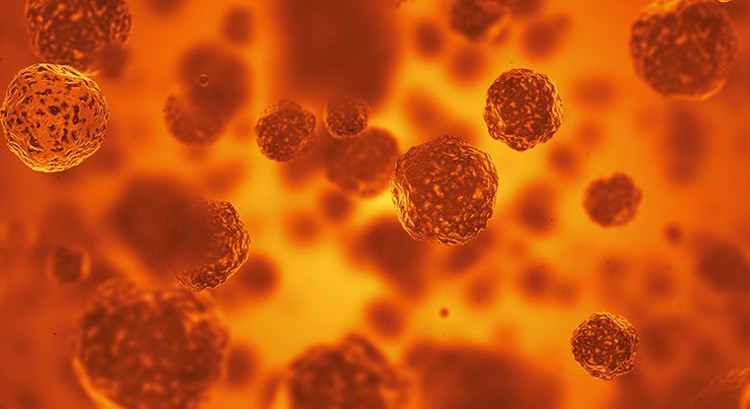Solving the phenomenon of drug resistance by giving bacteria 'fighting' together
After the end of the war, scientists can use traditional medicine to destroy the remaining "warriors", while other bacteria have "died" because of hunger.
In a study of mice, researchers combined traditional treatment with a nutrient that malaria parasites needed to survive. It is important that this strain of bacteria need more nutrients than other 'drug-sensitive pathogens' (pathogens that can be killed by drugs).
By limiting the supply of nutrients, the team forced drug-resistant parasites and parasites sensitive to drugs to fight against each other, and as a result they destroyed each other.
"Taking advantage of the fighting of parasites inside the host, we can use an existing drug to treat the disease successfully - even if the resistant parasite is still in the body" , Nina Wale, biologist and researcher at the University of Michigan, said.
This is because pathogens - from bacteria to parasites - develop genetic mutations to fight the treatment process. Once a mutant pathogen exists, it can quickly multiply, making the medications lose their effectiveness. Also due to bacteria creating a 'wall' against antibiotic effects - this is a concrete and common example of drug resistance.
What if the mutants that are resistant to the drug and are sensitive to the drug are thriving in the patient's body? Traditional drugs can kill drug-sensitive strains of bacteria, but with mutations that are resistant, the drug must also 'surrender'.
However, researchers have discovered an interesting thing: when taking nutrients is the food of these two bacteria, they will fight with each other to scramble for the smallest pieces of food left. . Compared to drug-sensitive parasites, drug-resistant bacteria need more nutrients to survive. Thus, after the war is over, scientists can use traditional medicine to destroy the remaining pathogens, while other bacteria all die of starvation.
Andrew Read, a leading researcher at the University of Pennsylvania, said: "If you don't use drug treatments, the only way to stop the spread of germs is to 'fight' them with microbes. " We are taking advantage of the natural rules of the war to destroy the parasite, and only need to use conventional drugs to remove the remaining bacteria."

Find new ways to treat drug resistance.(Photo: Shutterstock).
When the food source is abundant, 40% of the mice still have malaria even though they have been fully vaccinated. In the course of treatment, if the mice are undernourished, the parasite strains become weak and almost impossible to operate on the host. This process takes place even when the number of resistant bacteria is superior to the other.
The results from the experiment show that the method for bacteria to fight with each other is extremely effective, the next step researchers will develop corresponding treatments. The team of scientists identified the food of the pathogens - especially their resistance. Next, they will search exactly when the parasite needs to eat and the amount of nutrients they need to survive.
If this method is effective in people, the benefits they bring are extremely valuable. Because so far, drug resistance has made medicine difficult for many people, TB and malaria and they cause millions of deaths each year. Drug-resistant pathogens also cause problems in patients recovering from major surgeries and treatments such as chemotherapy.
Research may also open a new door to counteracting drug resistance in bacteria as well as prolonging the lifespan of therapeutic drugs."Normally, if a doctor finds resistance in a patient, they will never use it. But what if you have no other options? Don't worry, our method will help you. ' said researcher Read.
Research has been published in PNAS.
- How did bacteria learn to fight antibiotics?
- New breakthrough in the fight against drug resistance
- Learn about the phenomenon of antibiotic resistance
- Drug resistance of the virus
- Three types of antibiotics defeat the most dangerous drug resistance gene of the virus
- Bacteria resistant to all drugs discovered in the US
- Resistant bacteria can spread through the air, and this is not good news
- Increasing popularity of new drug-resistant TB strains
- Antibiotic resistance can be passed from mother to child
- Bio-nano robot will help end the antibiotic resistance crisis
- The golden age of antibiotics is over, the immediate future will be a nightmare for humans
- The principle you must remember in an age of nightmares 'antibiotic resistance'
 The United Nations' all-human warning: All antibiotics are becoming useless
The United Nations' all-human warning: All antibiotics are becoming useless How did bacteria learn to fight antibiotics?
How did bacteria learn to fight antibiotics? 10 million deaths are one of the startling numbers about 'Antibiotic resistance'.
10 million deaths are one of the startling numbers about 'Antibiotic resistance'. 7 principles when using antibiotics
7 principles when using antibiotics